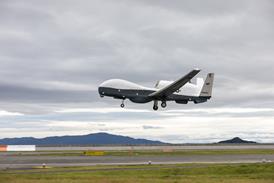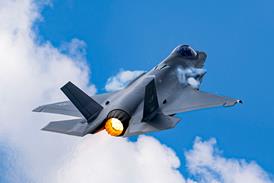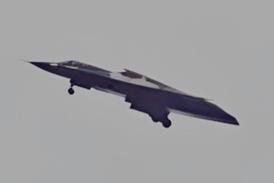Cuts to defense research and development (R&D) budgets threaten to limit US innovation at a time when countries like China and Russia are investing heavily in new defense technology, a top US Department of Defense official warns on 5 February.
But the official, acting deputy assistant secretary of defense for manufacturing and industrial base policy Elana Broitman, says the US intends to focus its curtailed defence R&D funds on the most promising pilot programmes and prototypes, a strategy aimed at maintaining the industrial base and ensuring a pipeline of future products.
She says funding will be targeted on large and small projects, but declines to discuss specific programmes like the US Army’s future vertical life project or the US Air Force’s long-range strike bomber.
“China, in particular, and Russia, to some extent, are innovating in ways that we really need to address,” says Broitman. “We can’t deny that there are innovative products out there that aren’t ours.”
Broitman made her comments to defense industry executives attending an aviation and defense conference in New York City hosted by investment company Cowen Group.
She spoke on behalf of under secretary of defense for acquisition, technology and logistics Frank Kendall, who Cowen said could not attend due to weather-related travel problems.
Between 1995 and 2011, China has tripled spending on defence R&D, Broitman notes, while during the same period US spending has increased 10%. That’s a real concern, she says, noting that counties like China and Russia don’t have export controls comparable to the US.
“Their export control regimes are not ours... The proliferation of some of their innovative products to countries of real concern, some rogue nations, is an enormous risk for us, a very direct risk,” Broitman says.
She adds that R&D funding is critical to maintaining an “innovation edge”, but in recent years spending on new technology has declined, and the agency’s R&D funding was cut by a greater percentage than any other budget category last year.
Defence R&D investment fell from about $80 billion in 2009 to about $68 billion last year. It’s forecast to decline to $65 billion in 2018, a roughly 17% drop, Broitman says.
“What worries us is, we don’t have a pipeline of new products and it takes such a long time to develop new products,” she says.
Broitman offered defense contractors little hope for a turnaround, saying near-term US government military funding remains uncertain due to multi-year budget cuts known as the sequester. Those cuts could continue until 2021.
“There are absolutely no guarantees,” she says, adding that the Defense Department has “absolutely no certainty” about the accuracy of its five-year budget projections.
The budget could also be affected by more political opposition in Washington to massive defense budgets, Broitman says, noting that Congressional seats are increasingly filled by politicians that have not served in the US military and who report to voters tired of war.
“When [they] look at multiple hundreds of billions of dollars in the budget, and when they look at their constituents’ war-weariness after over a decade of war, they are not as enthusiastic in supporting higher defense budgets,” Broitman says.
TAKING THE LONG VIEW
Still, Broitman stressed that US government has a responsibility to “look after the industrial base” and help private industry prioritise R&D investment. The government is committed to continuing to help fund the most-hopeful longer-term projects and reimburse some contractors for some R&D expenses, she says.
That’s a strategy, she says, that the US followed during previous defense downturns.
Selective investment in promising projects during the 1970s defence spending dip paid off during the defence boom of the 1980s, when many of those projects moved into development, according to Broitman.
Examples include the Patriot missile, Boeing’s AH-64 Apache helicopter, military vehicles made by Abrams and Bradley and new US Navy ships.
Likewise, unmanned air vehicles designed during the downturn of the 1990s came of age during the buildup in the 2000s, she said.
“This is the kind of strategy that is probably appropriate again,” Broitman says. “It keeps our industrial base healthy...it keeps design teams together.”
MERGERS, ACQUISITIONS
Broitman says the government recognises that some companies may look to mergers and acquisitions as a means of adapting to the austere budget environment.
The government is not likely to endorse consolidation among the nation’s top defense contractors, she says, but it may be more open to mergers of smaller companies.
“We are going to commit to looking at every case on its merits,” Broitman says, adding that the government will evaluate potential mergers based on the level of both domestic and international competition.
She also says her agency may be more open to allowing companies to seek international buyers.
“We know industrial base is more global than ever,” Broitman says. The government “understands the need by companies to look elsewhere [and] focus more on international markets.”
Source: FlightGlobal.com























